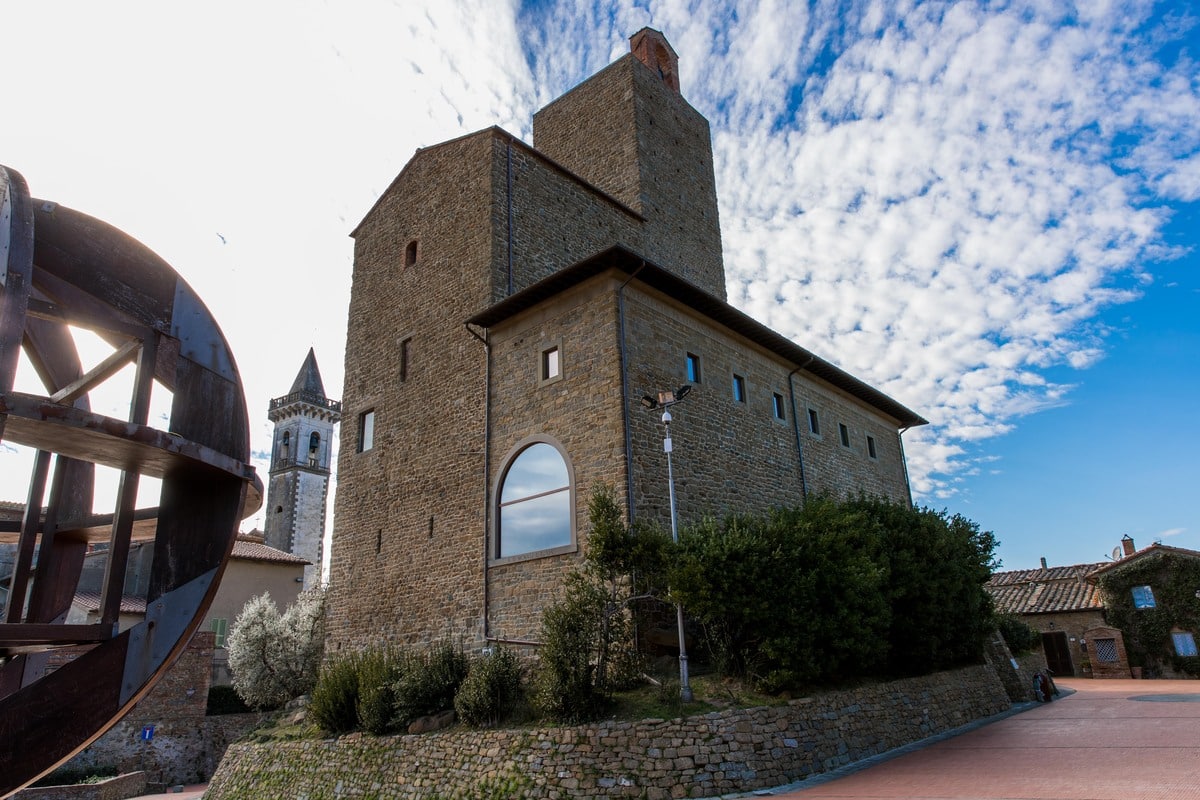The castle of the Conti Guidi is located in the centre of the ancient fortified village of Vinci. Since 1953 it has housed the Museo Leonardiano.
The first rooms of the museum are set up in the Palazzina Uzielli where there are sections dedicated to the construction machines used for the construction of the dome of Florence Cathedral by Filippo Brunelleschi; to the technology of textile manufacturing, so appreciated by Leonardo who created machines capable of automating and speeding up the textile production cycle; and to mechanical clocks.
The first floor of the building houses the Leonardo and Anatomy section, which exhibits ceramic statues made by the Brera Academy of Fine Arts and reconstructed on the basis of detailed anatomical drawings by Leonardo. The tour continues in the adjacent Conti Guidi Castle, the imposing medieval building traditionally known as the ‘castle of the ship’ because of its elongated shape and tower reminiscent of a sailing boat, which has towered over the town of Vinci since the 12th century.
The ground floor of the building houses the section devoted to the war machines designed by Leonardo during his long stay in Milan, at the court of Ludovico il Moro. The adjacent room houses the section dedicated to flying machines, including the majestic Great Articulated Wing and its mechanisms and instruments.
The first floor houses the section on water, an element that was often the focus of Leonardo’s studies, and on the construction of works to divert, rectify and regulate water courses.
The itinerary continues in the immersive room “Ebbe nome Lionardo” (He had the name Lionardo), which recounts the life of the genius from his birth to his move to Florence, and in the adjacent room where a copy of the famous landscape drawing 8P is exhibited, the first dated drawing by Leonardo and already identified as depicting the Valdinievole and part of the lower Valdarno. The nearby Sala del Podestà, rich in precious coats of arms recalling the passage of the Podestas who governed Vinci over the centuries, also houses a bas-relief depicting a Madonna and Child by Giovanni della Robbia and currently hosts temporary exhibitions, promoted by the Museo Leonardiano, such as the one held in 2019, Leonardo a Vinci.
At the Origins of Genius, held in collaboration with the Uffizi Galleries on the occasion of the 500th anniversary of Leonardo’s death, during which the original drawing of Paesaggio 8P, dated 5 August 1473, and some documents of the Da Vinci family, including grandfather Antonio’s famous note recording the birth of his grandson, were displayed. The room is currently hosting the exhibition Leonardo. Anatomy of drawings, a multimedia exhibition to learn about and explore, thanks to the ISLe (InSight Leonardo) application, 5 of the most important drawings by the Da Vinci genius.
The tour ends in the tower of the castle, which houses the room of geometric solids drawn by Leonardo to illustrate the book written by his friend Luca Pacioli De divina proporzione. The top of the tower leads to the panoramic terrace of the castle (open from April to October), reached by 120 steps and offering a beautiful view of the Montalbano hills, the Apuan Alps, Monti Pisani and the Livorno plain.
*** Translated with www.DeepL.com/Translator (free version) ***
info@museoleonardiano.it



